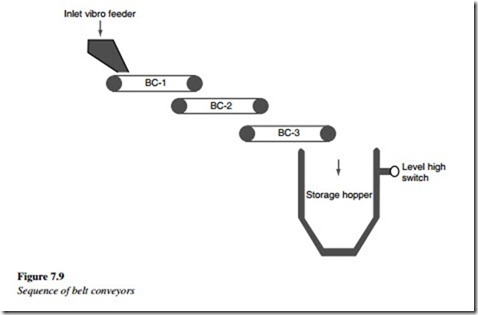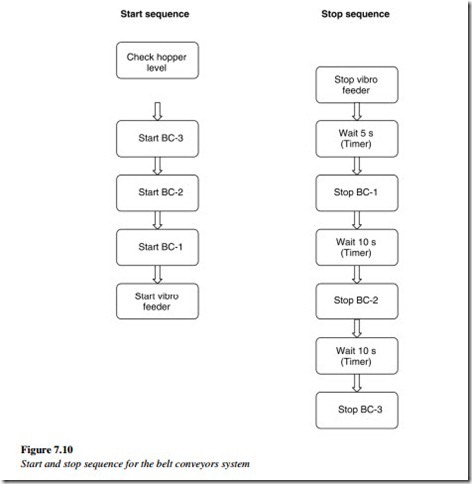Sequence start and stop
In large industrial plants, there are a large number of machines and drives. They are required to start and stop in a predetermined sequence. In such cases, it is impossible to start/stop each drive with an individual start/stop control circuit. Moreover, it is impossible to monitor each drive, follow the sequence of start/stop for the drives, and stop drives as per the process inputs.
To perform this kind of operation, sequencers are used; these may be mechanical or electromechanical.
With ‘Time’ sequencers, depending on the time duration and base sequencers, a number of outputs are switched on-off in a predefined sequence.
In the case of ‘pulse’ sequencers, a number of outputs are switched on-off in predefined
sequences, depending on the pulses received from the process (pulses may be either derived from the ‘proximity’ switches or the ‘limit’ switches, etc.).
To understand this, consider a sequence of the three-belt conveyor system carrying raw coal from an inlet vibro feeder to storage hopper (Figure 7.9).
To start the material conveying from the inlet vibro feeder to the hopper, first start the belt conveyor-3 (BC-3). Once the belt conveyor-3 is running, start the belt conveyor-2
(BC-2) and then start the belt conveyor-1 (BC-1). After the three conveyer belts are
started sequentially, then start the inlet vibro feeder, which drops the material onto the belt conveyors.
During the material feeding, if BC-3 or BC-2 trips, the upstream belt conveyors must also be stopped immediately. In addition, when the raw material hopper is filled to a high level, the belt conveyors must stop in the reverse sequence.
The sequence for start and stop for the ‘Belt Conveyor System’ is shown in the Figure 7.10.
Note: The purpose of not stopping conveying equipment immediately on receiving a STOP command is to avoid material remaining on the conveying equipment. Therefore in some installations, the material feed (such as a gate) is closed immediately on receipt of a STOP command and then the whole line is stopped after a preset delay adequate for the entire material remaining in the system to be cleared. This scheme avoids the necessity of multiple timer circuits required for a sequential stopping.

